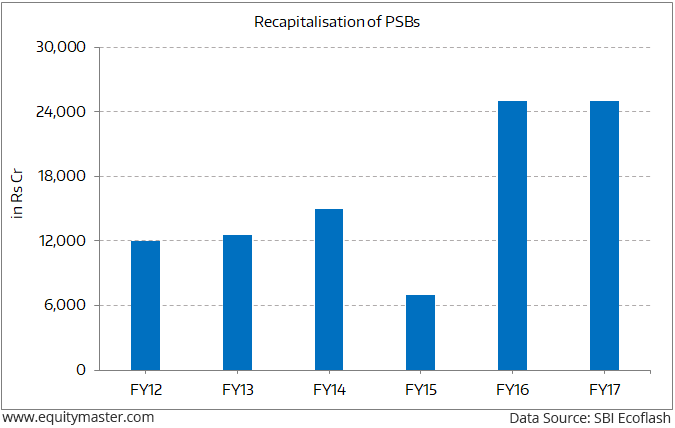Sensex Trades Rangebound; Axis Bank Rallies On Strong Q3 Result
Stock markets in India are presently trading on a flat note. The BSE Sensex is trading lower by 4 points and the NSE Nifty is trading lower by 17 points. Meanwhile, the BSE Mid Cap index is trading down by 0.1% while the BSE Small Cap index is trading up by 0.5%.
Among the sectoral indices, capital goods stocks and bank stocks are witnessing buying interest. While, realty stocksand FMCG stocks are trading in red.
The rupee is trading at 71.26 to the US$.
Bank stocks are trading on a mixed note with Axis Bank & Dhanlaxmi Bank leading the gains. Bank of Baroda share price is in focus today as it has reported results for third quarter ended 31 December 2018.
The Bank has reported over 4-fold jump in its net profit at Rs 4.7 billion for the quarter under review as compared to Rs 1.1 billion for the same quarter in the previous year.
Total income of the Bank increased by 12.2% at Rs 145.6 billion for Q3FY19 as compared Rs 129.8 billion for the corresponding quarter previous year.
The Bank's gross NPA for the October-December quarter of the current fiscal improved to 11.01%, as compared to 11.31% in the same quarter of the previous year.
Besides, Bank's Net NPA stood at 4.26% in Q3FY19.
Meanwhile, Axis Bank has reported over 2-fold jump in its net profit at Rs 16.8 billion for the quarter ended 31 December 2018 as compared to Rs 7.3 billion for the same quarter in the previous year.
Total income of the Bank increased by 26.7% at Rs 181.3 billion for Q3FY19 as compared Rs 143.1 billion for the corresponding quarter previous year.
The Bank's gross NPA for the October-December quarter of the current fiscal increased to 5.75%, as compared to 5.28% in the same quarter of the previous year. Besides, Bank's Net NPA stood at 2.36% in Q3FY19.
Moving on to the news from economy. As per SBI's Ecowrap report, public sector banks (PSBs) will require fund infusion of another Rs 500 billion in 2019-20 in a bid to help enable credit growth of 11%.
In December 2018, the government enhanced bank recapitalisation outlay from Rs 650 billion to Rs 1,060 billion for the current fiscal. As of December 2018, a total amount of Rs 515.1 billion has been infused into PSBs.
As per the report, government should infuse the promised recapitalisation amount of Rs 544.9 billion (net of promised Rs 1,060 billion) by March 2019. This will act as a big enabler for banks.
As per the report, assuming an 11% credit growth in FY20 with credit risk weighted assets of 70% (RWAs to Gross Advances ratio declined from 80.26% in Sep-17 to 71.20% in Sep-18), PSBs may be requiring around Rs 500 billion growth capital in FY20.
However, it said the same also depends upon some major variables that is alternate long-term investor, recoveries from NCLT, investment environment, out of NCLT settlements, MTM provisioning of investments, additional or provision write-back.
Speaking of recapitalisation of PSBs, we at Equitymaster believe, using recapitalisation bonds can only act as a short-term measure to the crisis afflicting Indian public sector banks today. Such a measure will not address the structural issue in the banking system, i.e. the poor standard of lending and poor governance system.
Recapitalisation of PSBs Over the Years

Our big picture editor, Vivek Kaul, talks about moral hazard risk arising out of recapitalization. He writes:
- "If the government bails them around this time around, the banks know that they can count on the government bailing them out the next time around as well. And this means that they can follow fairly loose standards of lending, in order to lend money quickly."
And to know what's moving the Indian stock markets today, check out the most recent



